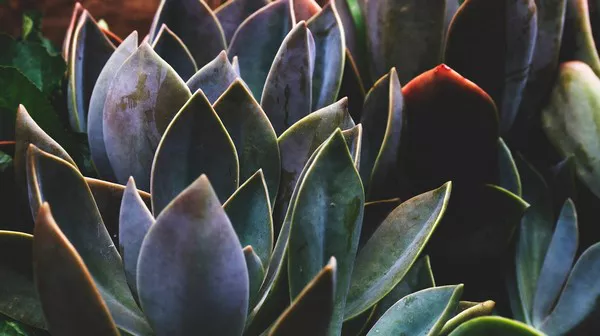Succulents have surged in popularity in recent years, captivating gardening enthusiasts, interior decorators, and plant lovers worldwide. Known for their striking shapes, vibrant colors, and easy care requirements, succulents have found a special place in modern gardens, homes, and offices. This article aims to explore the most popular succulents, shedding light on their unique characteristics, care needs, and fascinating origins.
The Rise of Succulents
In the last decade, succulents have experienced a significant rise in popularity. Their drought-resistant nature, low maintenance, and ability to thrive in various environments have contributed to their appeal. Social media platforms, particularly Instagram and Pinterest, have played a crucial role in promoting these trendy plants, with hashtags like #succulentlove and #succulentaddict amassing millions of posts.
What Defines a Succulent?
Succulents belong to the plant family Crassulaceae and encompass a vast array of plant species with unique adaptations to arid conditions. Their defining feature is their ability to store water in their fleshy leaves, stems, or roots, which allows them to survive in dry environments.
Popular Types of Succulents
1. Echeveria (Echeveria spp.)
Echeverias are among the most beloved succulents, celebrated for their rosette-shaped, waxy leaves that form stunning symmetrical patterns. With a wide range of colors, from pale greens to purples and even blues, Echeverias are a favorite for succulent arrangements and container gardens.
2. Sedum (Sedum spp.)
Sedums, also known as stonecrops, are versatile and come in various shapes and sizes. They are renowned for their star-shaped flowers and adaptability to different climates. Sedums are a popular choice for ground cover, hanging baskets, and rock gardens.
3. Aloe Vera (Aloe barbadensis miller)
Aloe Vera stands out not only for its visual appeal but also for its numerous medicinal properties. The gel found in its leaves is known for its soothing properties and is often used for skincare and wound healing. Aloe Vera plants are excellent additions to indoor spaces due to their air-purifying abilities.
4. Haworthia (Haworthia spp.)
Haworthias are smaller succulents, often compared to Aloe Vera due to their rosette-like appearance. They feature fascinating geometric patterns on their leaves, making them an attractive choice for modern home decor.
5. Crassula (Crassula spp.)
Crassulas, commonly referred to as jade plants, are adored for their strikingly beautiful foliage and ease of care. These hardy succulents can thrive both indoors and outdoors, making them a popular choice for beginners and seasoned gardeners alike.
6. Agave (Agave spp.)
Agaves are known for their dramatic and architectural appearance. With long, pointed leaves and imposing sizes, these succulents create a strong focal point in any garden or landscape. Agaves are also used in the production of tequila and agave syrup.
Cultivating and Caring for Succulents
1. Light Requirements
Most succulents thrive in bright, indirect sunlight, making them ideal for windowsills or well-lit indoor spaces. However, it’s essential to protect them from intense, direct sunlight during the hottest parts of the day, as this can lead to sunburn.
2. Watering
One of the most common mistakes when caring for succulents is overwatering. These plants are adapted to survive in arid conditions and can suffer from root rot if subjected to excessive moisture. A good rule of thumb is to allow the soil to dry out between waterings.
3. Soil and Potting
Succulents prefer well-draining soil to prevent waterlogged roots. Specialized cactus or succulent potting mixes are readily available, or you can create your own by adding sand or perlite to regular potting soil.
4. Temperature and Humidity
Most succulents prefer moderate temperatures between 60°F and 80°F (15°C to 26°C). They can tolerate low humidity levels, but it’s crucial to provide adequate air circulation to prevent fungal issues.
5. Propagation
Succulents are relatively easy to propagate through various methods, including stem cuttings, leaf cuttings, and offsets (baby plants that form around the base of mature succulents).
Creative Uses of Succulents
Succulents’ versatility extends beyond traditional potted plants. They have become popular elements in a range of creative projects:
1. Living Walls and Vertical Gardens
Succulents are excellent choices for living walls and vertical gardens due to their ability to grow in confined spaces and unique colors and shapes.
2. Terrariums
These miniature, self-sustaining gardens provide an enchanting way to showcase succulents in a glass container. Terrariums can be open or closed, creating different microclimates for the plants.
3. Wedding Decor
Succulents have become sought-after additions to wedding bouquets, boutonnieres, and centerpieces, adding a touch of nature to special occasions.
Conclusion
The surge in popularity of succulents is well-deserved, given their captivating appearance, ease of care, and versatility. From Echeverias to Aloe Vera and beyond, these unique plants have found their way into our hearts and homes. By understanding their needs and embracing sustainable practices, we can continue to enjoy these trendy succulents responsibly and contribute to their preservation for generations to come.


